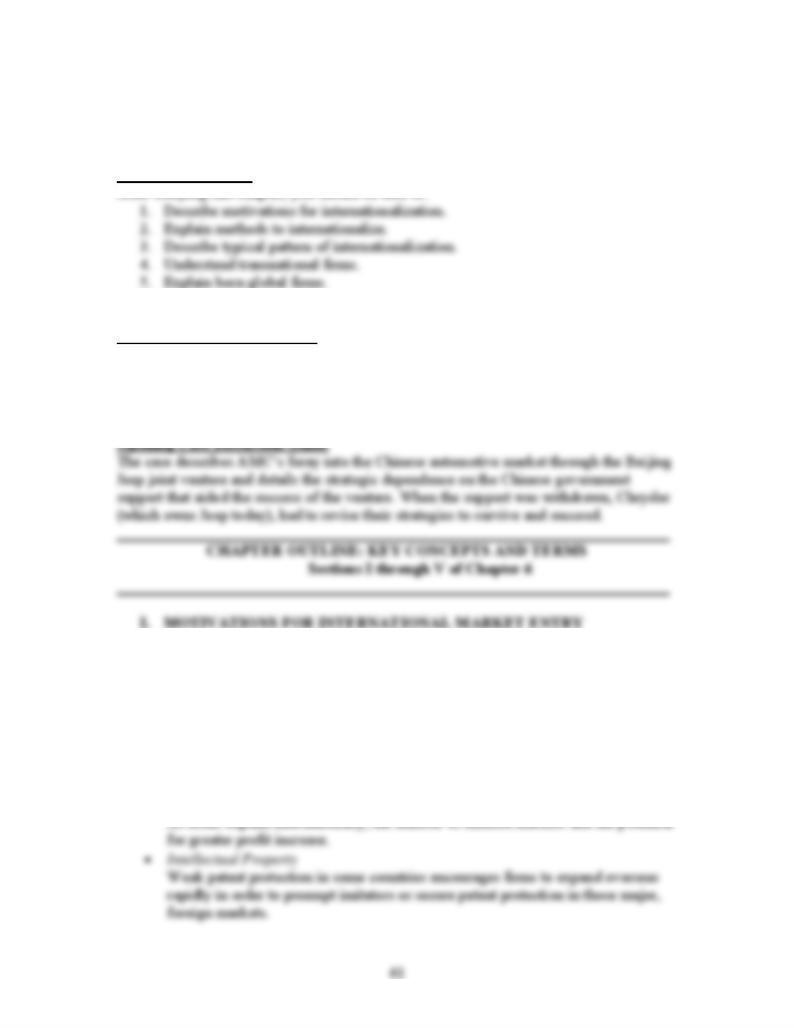
INTERNATIONAL MANAGEMENT Chapter 6: International Market Entry
Chapter 6
INTERNATIONAL MARKET ENTRY
Learning Objectives
6. Explain the aspects associated with implementation of international market entry.
General Teaching Suggestions
Describe the evolution of a brand that used the export route for international. Contrast
this with other brands that used methods such as licensing, greenfield ventures, and
franchising. Examine how these firms use each of these methods to balance the tradeoff
between risk and control.
1. Key Concepts
Factors that encourage all firms to expand internationally include:
• Increased Market Share
The impact of increased market share can affect a firm in several ways, including
offering new sales when the firm’s existing market is saturated.
Economies of scale: In some industries a single market may not be large enough
to support the capital outlay needed to conduct an activity, so a firm must
consider international entry to obtain the necessary economies of scale.
• ROI
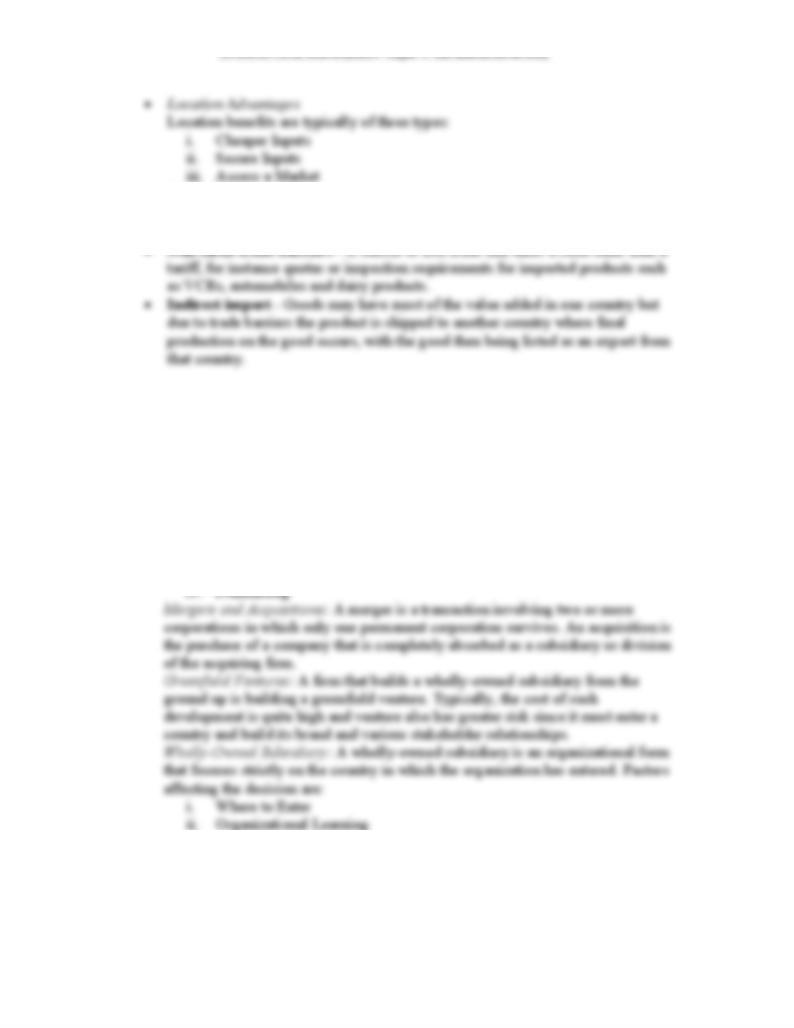
INTERNATIONAL MANAGEMENT Chapter 6: International Market Entry
42
2. Key Terms
• Harmonization - Efforts between nations to have the same code of standards for
products and how they are treated in regards to tariffs.
1. Key Concepts
Four major means of internationalization are:
Export: The most immediate way to internationalize a firm is to directly export
goods to a market outside your home country.
Alliances: A firm moves into a market in association with other firms. Different
types of alliances are:
i. Informal Alliances
ii. Licensing
iii. Joint Venture
2. Key Terms
• Export - The shipping of a good from the home market to markets outside the
home country.
• Licensing agreement - In such an agreement, a firm agrees to pay a firm for the
right to either manufacture or sell a product. The firm selling the right to this
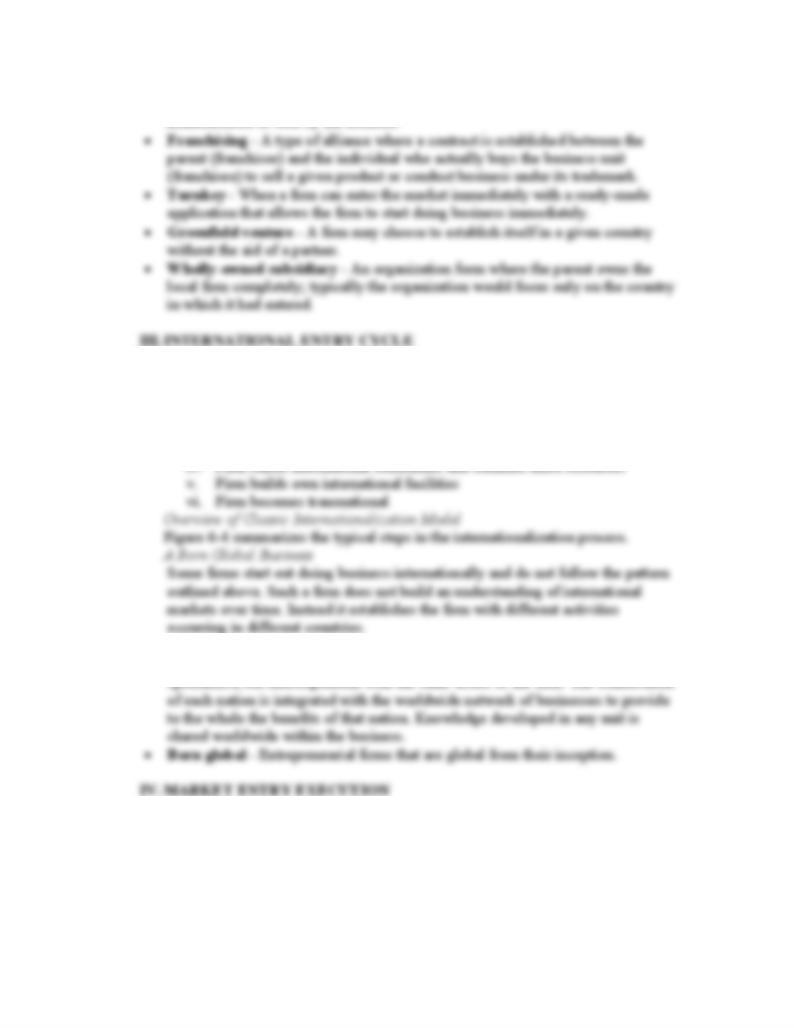
INTERNATIONAL MANAGEMENT Chapter 6: International Market Entry
43
product typically loses the right to control various aspects of the product when
manufactured or sold by the licensee.
1. Key Concepts
The typical steps in the internationalization process are:
i. Firm starts only in a domestic market
ii. Firm becomes aware of international opportunities
iii. Firm enters a market in a small way
2. Key Terms
• Transnational firm - In this type of firm the business assets are highly
1. Key Concepts:
• Planning Entry: The planning process will be more successful if it involves
greater numbers of individuals throughout an organization. This process will also
generate organizational commitment by managers in the acquiring firm. Accurate
planning also helps form the perspective of those in the acquiring firm.
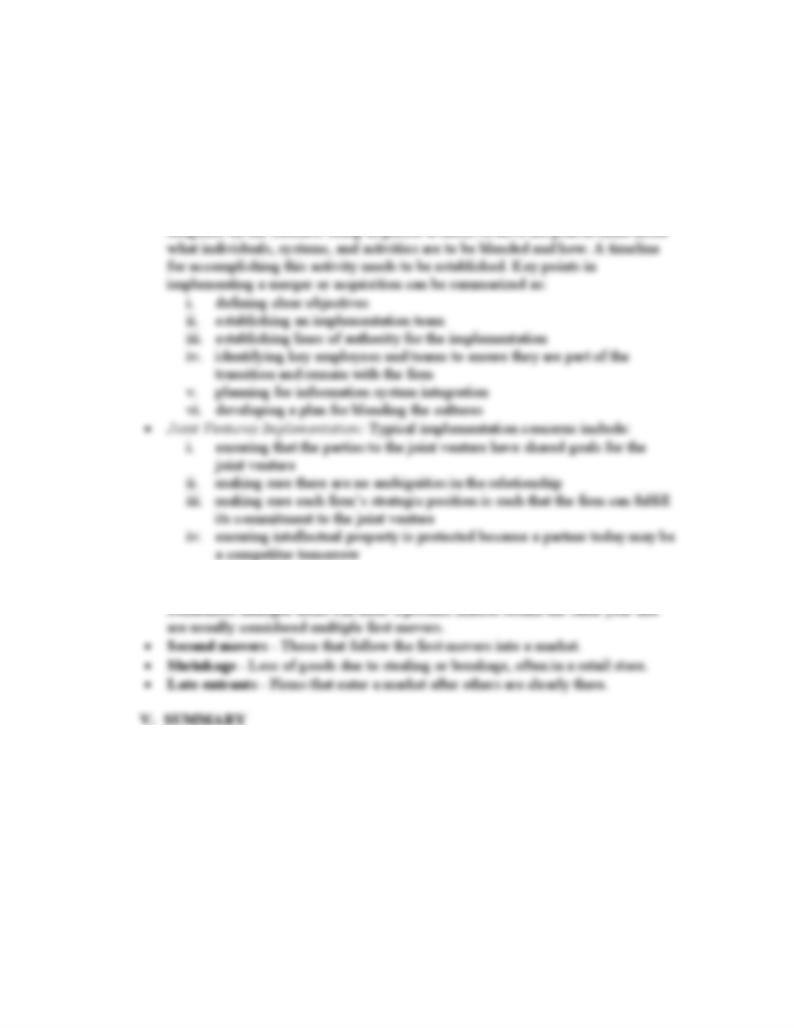
INTERNATIONAL MANAGEMENT Chapter 6: International Market Entry
44
• Timing of Entry: The first firm into an area is typically referred to as a first
mover also referred to as pioneers. Those that come after a first mover are called
second movers or fast followers. There are times when moving quickly into a
market after the first mover, called a fast second, is the preferable position. Some
firms enter a market after others are established. These firms are called followers
or late entrants.
• Integration M&A: In planning for an M&A, a firm must do extensive due
1. Key Terms
• First mover - The first firm into an area, whether a product or national market.
1. Key Concepts:
• A variety of motivations can encourage a firm to move into an international
market, including increasing market share; obtaining greater return on
investment; protecting intellectual property; obtaining location advantages; or
securing access to labor, raw materials, and markets.
• A firm then must determine how it wishes to move internationally—through a
greenfield venture, merger or acquisition, joint venture, franchise, license,
consortium, outsourcing, or some informal alliance.
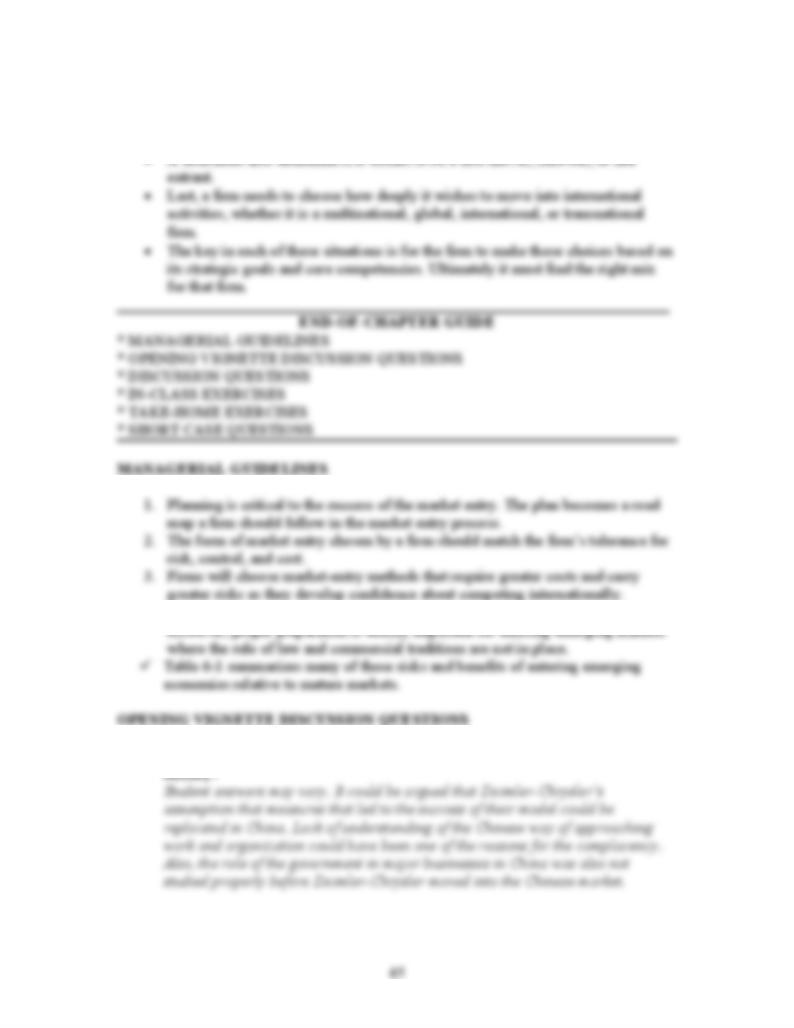
INTERNATIONAL MANAGEMENT Chapter 6: International Market Entry
• Firms will typically start out with a low-risk method of entering a market, such as
licensing, and as the firm grows more confident, it may move on to greenfield
ventures as the highest-risk, highest-reward type of venture.
4. Good preparation is essential for market entry, particularly via joint venture.
1. Why did Daimler-Chrysler pay relatively so little attention to the joint venture
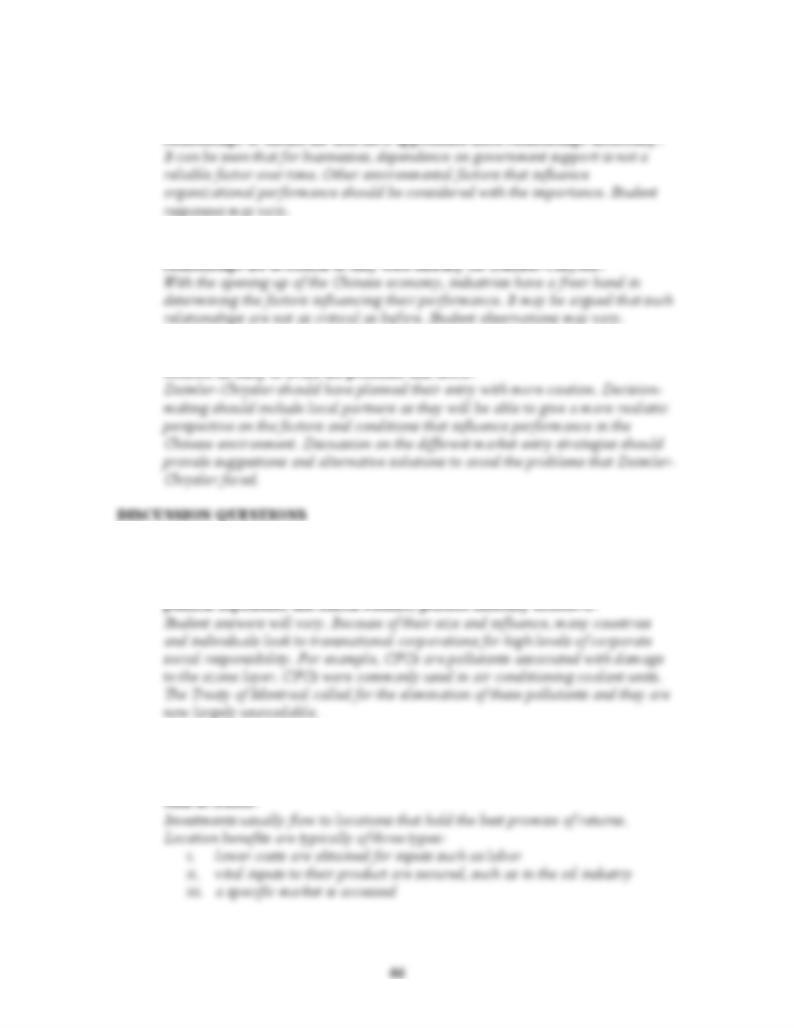
INTERNATIONAL MANAGEMENT Chapter 6: International Market Entry
2. The joint venture initially relied heavily on its relationships with the government,
and it seemed to bring benefits to the firm. Was it wrong to focus on such
3. Based on your understanding of China today, do you think government
4. What are some of the implementation issues that Daimler-Chrysler could have
1. What do you think of the pressures brought on transnational firms for issues like
pollution? Is it is ethical for political groups to target only those firms or is it done
because targeting these firms is politically expedient? Are the concepts of
2. Over 75 percent of FDI from transnational corporations goes to Asia (particularly
China) but only approximately 1 percent of FDI goes to Africa. Is it appropriate to
force transnational corporations to spread their investment more evenly to areas

INTERNATIONAL MANAGEMENT Chapter 6: International Market Entry
3. Why do you think born global firms are a recent phenomenon? Will such firms
1. Separate into teams. Half the teams are to envision themselves as technology
companies from a mature western economy such as the United Kingdom. They
2. Separate into teams. Assume that half of the teams are representatives of a
transnational corporation such as Wal-Mart. The other half of the teams are
NGOs. The NGOs have found that most of the soccer balls from the suppliers’
plants are produced by children as young as 5 years old and typically less than 14
years old. Wal-Mart says that it simply buys the ball from a wholesaler and is not
responsible to do more than provide low-cost goods because the children are not
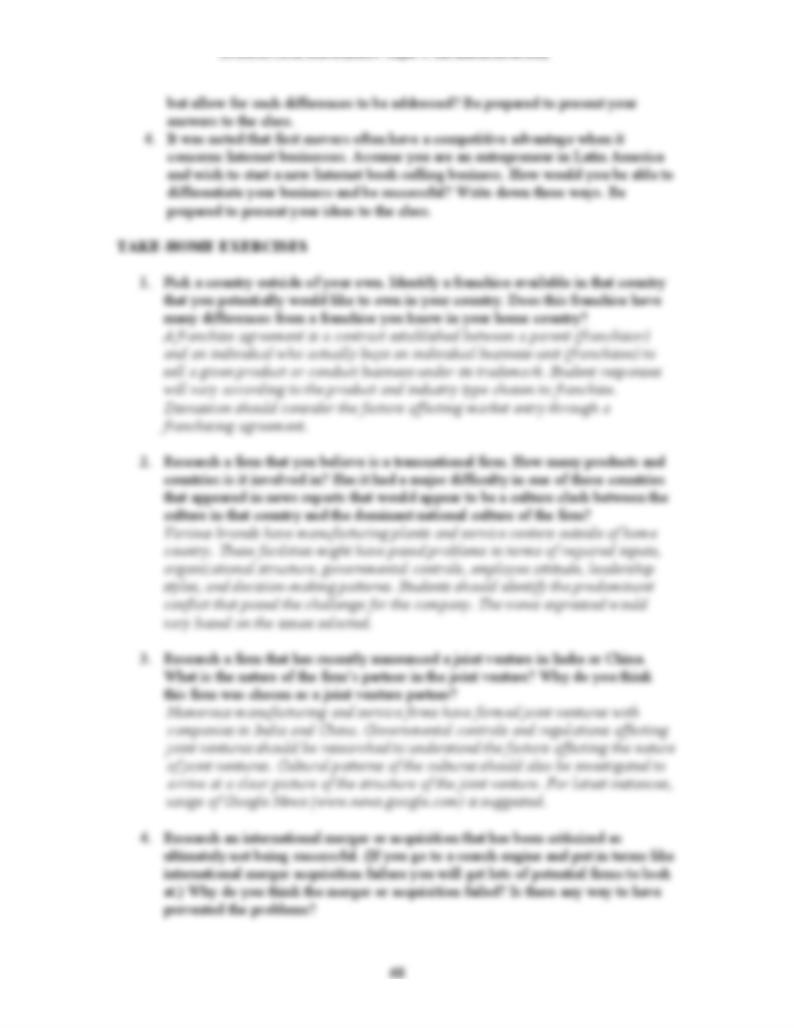
INTERNATIONAL MANAGEMENT Chapter 6: International Market Entry
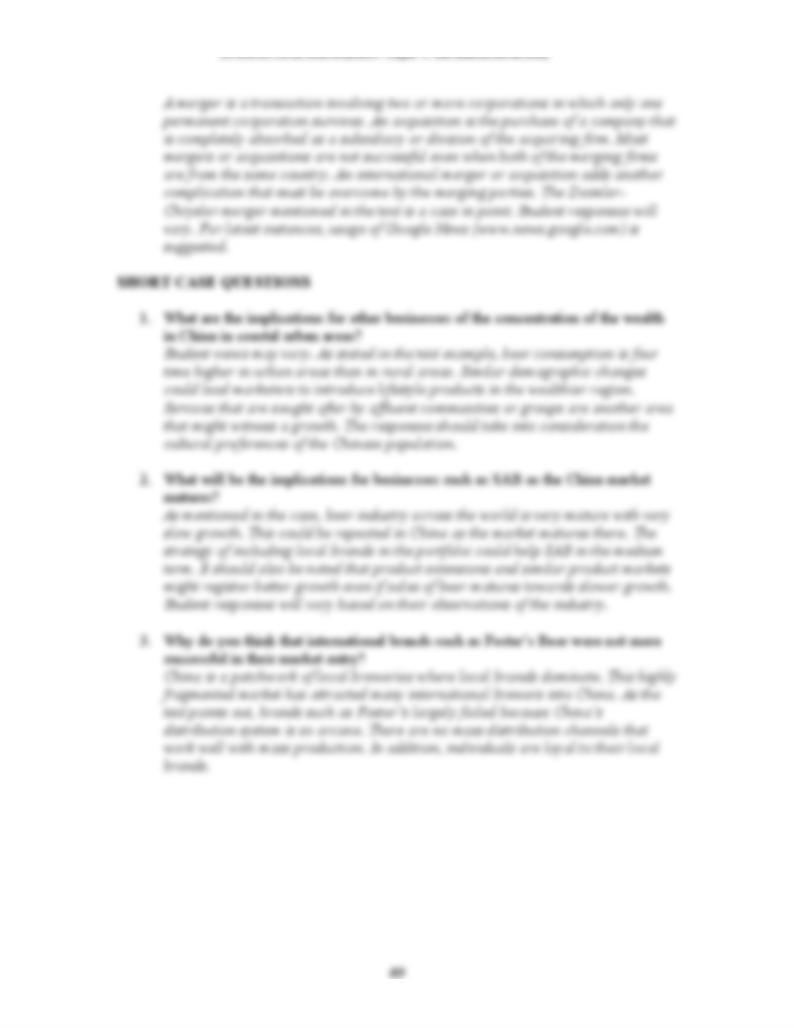
INTERNATIONAL MANAGEMENT Chapter 6: International Market Entry